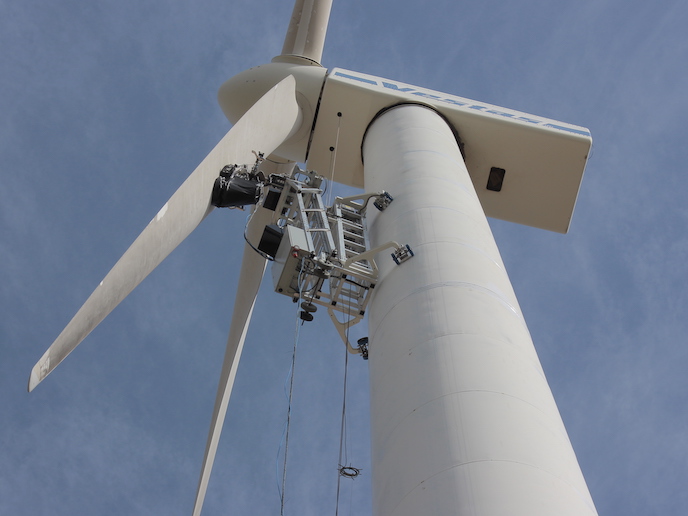Robotically inspecting wind turbine blades
As part of the Green Deal(opens in new window) initiative, the EU aims to reduce greenhouse gas emissions by 55 % by 2030. “Achieving this new target will require a substantial increase in the use of renewable energy, by as much as 40-66 %,” says Martin Bourton, a researcher at TWI(opens in new window). As Bourton explains, much of this renewable energy will be derived from wind. However, this requires having not only the right infrastructure, but also new technologies for inspecting and maintaining it. “To maximise energy output from wind turbines, they must be operated efficiently,” he adds. “This means boosting their aerodynamic performance and minimising downtime – a process that starts with efficient inspection and maintenance solutions.” With the support of EU funding, Bourton helped lead an effort to develop such a solution. The result is SheaRIOS(opens in new window), a robotically deployed inspection system that uses advanced robotics and a measuring and testing method called shearography to perform in situ inspections of operational wind turbine blades (WTBs).
A crucial and costly component
The reason the SheaRIOS team focused on WTBs is that they are a crucial and costly component of a wind turbine(opens in new window) and are particularly vulnerable to damage. “WTBs must withstand enormous strains during operation, as they are stressed by an extreme dynamic load spectrum,” explains Bourton. “They are also exposed to environmental impacts, such as temperature change, precipitation and lightning strikes, as well as erosion.” All of this can increase the risk of failure – a failure that could result in damage to the wind turbine tower itself or other WTBs. Such damage often causes a loss of aerodynamic performance, which leads to decreased annual energy production. The key to preventing such situations is to repair or replace a WTB before such a failure occurs. However, doing so requires regular inspection and maintenance, which is easier said than done. “Inspections are hazardous, and accidents, even fatalities, can and do occur,” remarks Bourton. Inspecting WTBs can also be prohibitively expensive and will only become more expensive as they grow in size and are installed in remote locations such as offshore. “Wind turbines only produce energy when they are running, so any stoppage for inspection, maintenance or repair reduces their efficiency,” notes Bourton.
A robotic inspection solution
According to Bourton, the SheaRIOS solution was designed to address all these inspection challenges. “During an inspection, the robotic climber ascends a wind turbine tower and releases the crawler robot onto the surface of a WTB,” he explains. “The crawler uses vacuum-assisted caterpillar tracks to manoeuvre to an area of interest, where the shearography inspection of the blade is performed.” The SheaRIOS system is remotely controlled from ground level using a high-bandwidth data link within an umbilical cable. The robotic climber acts as a distribution hub for power and communications for the crawler and the inspection unit. “The use of a robotic solution not only means inspections can be done while a turbine is in operation, it also means they can be done regularly and affordably,” concludes Bourton. “Most importantly, with SheaRIOS on the tower instead of a human, WTB inspections become much safer.” Following successful demonstrations of their solution, the team is now seeking external funding to bring SheaRIOS to market.







